
The flame-colored tanager, formerly known as the stripe-backed tanager, is a medium-sized American songbird in the family Cardinalidae, the cardinals or cardinal grosbeaks. It is found from Mexico throughout Central America to northern Panama and occasionally in the United States; four subspecies are recognized. The flame-colored tanager is 18 to 19 cm long, the male having predominantly red-orange while the female is more yellowish orange.

The scarlet myzomela or scarlet honeyeater is a small passerine bird of the honeyeater family Meliphagidae native to Australia. It was first described by English ornithologist John Latham in 1801. At 9 to 11 cm long, it is the smallest honeyeater in Australia. It has a short tail and relatively long down-curved bill. It is sexually dimorphic; the male is a striking bright red with black wings, while the female is entirely brown. The species is more vocal than most honeyeaters, and a variety of calls have been recorded, including a bell-like tinkling.

Pergularia is a genus of the botanical family Apocynaceae. Pergularia daemia is a perennial twinning herb that grows along the roadsides of India and tropical and subtropical regions in South Asia, Africa, and Australia.

Mycena sanguinolenta, commonly known as the bleeding bonnet, the smaller bleeding Mycena, or the terrestrial bleeding Mycena, is a species of mushroom in the family Mycenaceae. It is a common and widely distributed species, and has been found in North America, Europe, Australia, and Asia. The fungus produces reddish-brown to reddish-purple fruit bodies with conic to bell-shaped caps up to 1.5 cm (0.6 in) wide held by slender stipes up to 6 cm (2.4 in) high. When fresh, the fruit bodies will "bleed" a dark reddish-purple sap. The similar Mycena haematopus is larger, and grows on decaying wood, usually in clumps. M. sanguinolenta contains alkaloid pigments that are unique to the species, may produce an antifungal compound, and is bioluminescent. The edibility of the mushroom has not been determined.
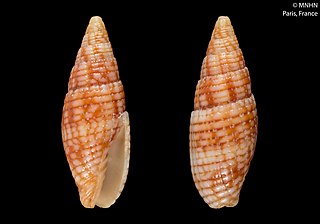
Quasimitra sanguinolenta is a species of sea snail, a marine gastropod mollusk in the family Mitridae, the miters or miter snails.

Passiflora sanguinolenta, common name blood red passion flower, is a species of passion flower from Ecuador.

Bembecia is a genus of moths in the family Sesiidae.

Cercopis sanguinolenta is a species of cicadas in the family Cercopidae.
Bembecia sanguinolenta is a moth of the family Sesiidae. It is found from Bulgaria and Greece to Asia Minor, Armenia, Syria and Turkmenistan.
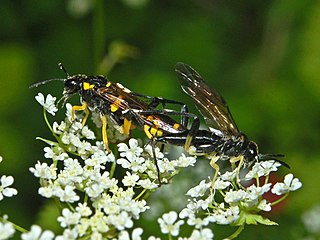
Macrophya is a genus of sawfly.
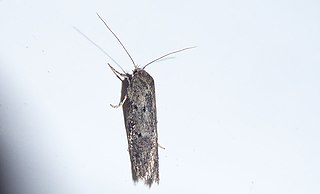
Leptocroca asphaltis is a moth of the family Oecophoridae. It was described by Edward Meyrick in 1911. It is endemic to New Zealand.
Leptocroca lenita is a moth of the family Oecophoridae. It was described by Philpott in 1930. It is found in New Zealand.

Leptocroca scholaea is a moth of the family Oecophoridae. It was described by Edward Meyrick in 1884. It is found in New Zealand.
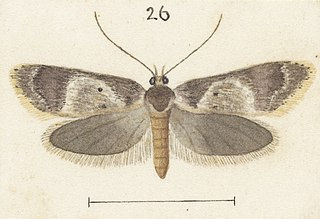
Leptocroca vinaria is a moth of the family Oecophoridae. It was described by Edward Meyrick in 1914. It is found in New Zealand.

Henricia sanguinolenta, commonly known as the northern henricia, is a species of sea star from the North Atlantic and North Pacific oceans. Henricia sanguinolenta is very similar to Henricia oculata, also known as "bloody Henry", and the two can only be distinguished by laboratory tests. It comes in colors of red, yellow, orange, purple, and lavender.

Columnea sanguinolenta is a species of Gesneriaceae that is native to Colombia, Costa Rica, and Panama.
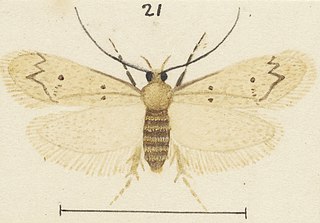
Leptocroca amenena is a moth of the family Oecophoridae first described by Edward Meyrick in 1888. It is endemic to New Zealand. The classification of this moth within the genus Leptocroca is regarded as unsatisfactory and in need of revision. As such this species is currently also known as Leptocroca (s.l.) amenena.
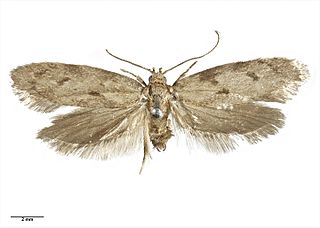
Leptocroca aquilonaris is a moth of the family Oecophoridae first described by Alfred Philpott in 1931. It is endemic to New Zealand. The classification of this moth within the genus Leptocroca is regarded as unsatisfactory and in need of revision. As such this species is currently also known as Leptocroca (s.l.) aquilonaris.

Leptocroca porophora is a moth of the family Oecophoridae first described by Edward Meyrick in 1929. It is endemic to New Zealand. The classification of this moth within the genus Leptocroca is regarded as unsatisfactory and in need of revision. As such this species is currently also known as Leptocroca (s.l.) porophora.
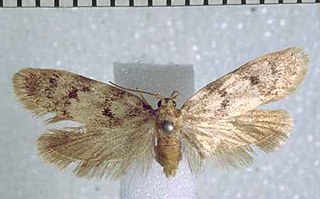
Leptocroca variabilis is a moth of the family Oecophoridae first described by Alfred Philpott in 1926. It is endemic to New Zealand. The classification of this moth within the genus Leptocroca is regarded as unsatisfactory and in need of revision. As such this species is currently also known as Leptocroca (s.l.) variabilis.



















